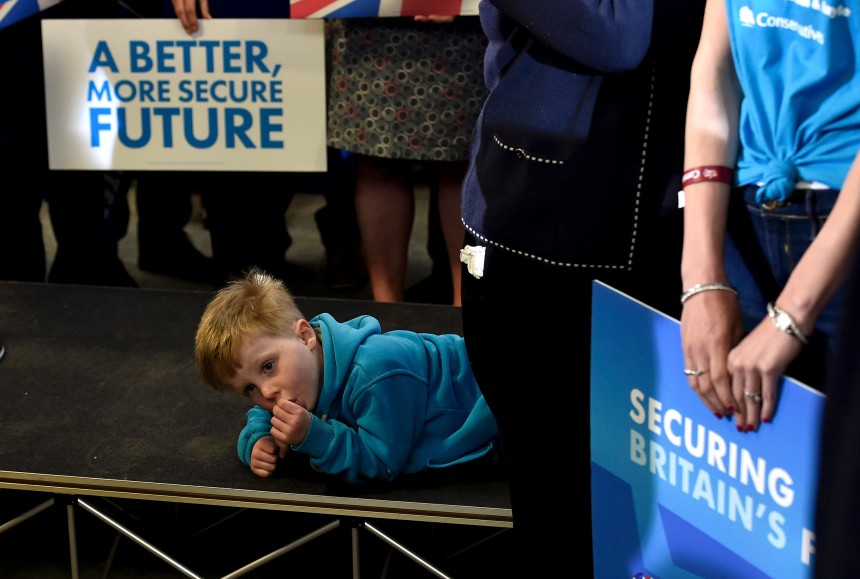Gary Gibbon IFS verdict: The choice is between austerity and austerity-lite, but it could be the biggest in a generation

A future voter contemplates David Cameron earlier today
The IFS has crunched the numbers in the party manifestos on spending and is not awarding very high marks for candour. The SNP doesn’t get very high marks for numeracy off them either.
The toughest deliverers of austerity, the Tories by a long shot, get lowest marks for coming clean. They’ve had £12b of welfare cuts planned for next year for a long time and are shading in barely 10% of the detail on how they’d achieve that. Their projected cuts to unprotected departments are massive, but again, just how the party finds those cuts in justice, policing, social care, councils etc. is not discussed.
On this, St George’s Day, as David Cameron slips on the white suit and bells of his special election Morris dancing outfit, the crossover between SNP and Labour plans will be of interest. The IFS says the two parties’ “numbers (on spending) are broadly consistent – the rhetoric is not.”
The SNP’s promised end to austerity isn’t borne out by their sums in the manifesto – according to the IFS the SNP make £6b of cuts in unprotected departments by the end of the next parliament. That’s potentially more than £5b more than Labour ( though Labour’s plans end up looking similar if you assume they pay up Simon Stevens’ £8b recommended cash injection for the NHS).
If you thought austerity was over it isn’t really under any of these plans. If overall spending only rises in line with inflation not growth you still have belt-tightening especially in the unprotected departments, but it is “austerity lite” compared with the Tory offer. The IFS says the gap between the two main parties’ offer on spending is the widest it has been since 1992 … the widest “in a generation,” you might say, but the Scottish debate has rather challenged that metric, so let’s stick with “1992.”
